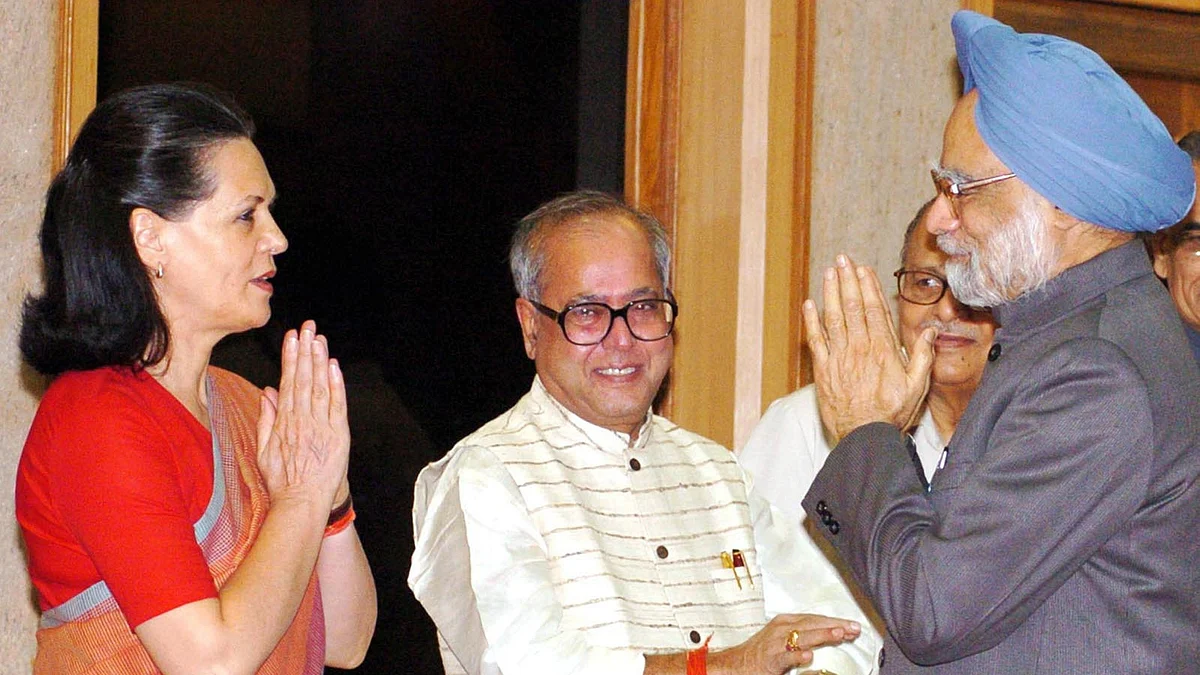
The Bond That Kept Manmohan Singh as Prime Minister
Sonia Gandhi had no doubts in her mind who was best suited to navigate a coalition government, writes Arati Jerath.

advertisement
This story is being republished on former Indian Prime Minister Dr Manmohan Singh's 93rd birthday.
Recently deceased former prime minister Manmohan Singh was once asked whether he had ever considered resigning during his 10-year rule, the second half of which was particularly turbulent because his government was drowning in a sea of corruption scandals and hit by policy paralysis.
Apparently not even when Rahul Gandhi, then vice president of the Congress party, stoked a huge controversy by tearing up in full public view an ordinance the United Progressive Alliance (UPA) government had introduced to protect political leaders facing graft charges.
The answer to the enduring mystery of why a man who valued his reputation for integrity and honesty should have stayed put as prime minister even as his reputation was being battered mercilessly lies in the unique relationship he shared with then Congress president Sonia Gandhi.
Not an 'Accidental Prime Minister'
The fact of the matter is that Manmohan Singh was not the 'accidental prime minister' he was made out to be. Sonia Gandhi had picked him for the post as far back as 1999 when she attempted to form an alternative government after bringing down late Bharatiya Janata Party (BJP) leader Atal Bihari Vajpayee’s first National Democratic Alliance (NDA) government with then Tamil Nadu chief minister Jayalalithaa’s help.
A senior Left leader revealed later that then President KR Narayanan had confided to them that she had taken him aside and put forward Manmohan Singh’s name as her choice to head that government.
(Image: PTI)
The move came crashing down as other potential allies refused to play along with the Congress. Elections were held and Vajpayee’s NDA returned with a full majority this time.
As word spread in Congress circles about Sonia Gandhi reposing faith and trust in a technocrat and political lightweight like Manmohan Singh in preference to seasoned leaders like Arjun Singh, Pranab Mukherjee, and Madhavrao Scindia, a section of the party conspired to have him defeated in the one and only Lok Sabha election he fought.
However, Sonia Gandhi was aware of the machinations of her durbaris, and if anything, the defeat only strengthened her relationship with Manmohan Singh.
She appointed him to head important party committees, and with his help, crafted an economic programme with the motto "reforms with a human face".
Sonia Gandhi's Choice for PM Again
It was only natural then that when the Congress narrowly pipped the BJP to the post, emerged as the single largest party in the 2004 general election, and was invited to form the government, Sonia Gandhi fell back on the man who was always her choice for prime minister: Manmohan Singh.
Congress leaders wept, fell at her feet, and beat their chests but to no avail. She insisted that Manmohan Singh be elected as the party leader – and they went together to Rashtrapati Bhavan to stake claim.
It must have been an overwhelming moment for Manmohan Singh to be entrusted with the task of running a Congress-led government and holding a post which had till then been considered the preserve of a member of the Nehru-Gandhi family.
(Image: PTI)
Although they worked out a diarchy model with Manmohan Singh holding the reins of governance while Sonia Gandhi retained political control, the former was acutely conscious of an unspoken understanding between them to prove that the Congress could run a coalition government as effectively and efficiently as Vajpayee – and the BJP – ran the earlier one.
The key was to ensure stability, keep the coalition together, and complete a full tenure. When the UPA was elected for a second term after a bruising confrontation with the Left which withdrew support over the US-India civil nuclear deal, the imperative to hold the government and see it through its full tenure despite the odds was even stronger.
This was project in which Sonia Gandhi was fully invested. But so was Manmohan Singh although they differed on the road map. Manmohan Singh was keen to induct Rahul Gandhi as a minister in his government so that he could gather administrative experience and familiarise himself with the process of policy making.
(Image: PTI)
Rahul Gandhi wanted to prove himself politically first before coming into government. In other words, he wanted an electoral victory to establish his credentials as a political figure of note.
Although Manmohan Singh was subject to derision, criticism, and sometimes, humiliation, he never wavered in his loyalty and commitment to the responsibility thrust on him by a trusting Sonia Gandhi.
(Arati R Jerath is a Delhi-based senior journalist. She tweets @AratiJ. This is an opinion piece and the views expressed above are the author’s own. The Quint neither endorses nor is responsible for the same.)
- Access to all paywalled content on site
- Ad-free experience across The Quint
- Early previews of our Special Projects
Published: 29 Dec 2024,09:14 AM IST